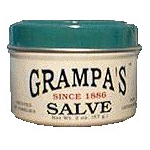Rosacea is a chronic disorder of the facial skin, causing at first redness, usually on the cheeks, nose, chin and forehead, affecting nearly 14 million Americans. It almost always begins from ages 30-60, rarely appearing in children. There is some evidence that twice as many women as men are rosacea sufferers but that womens cases are usually milder than mens. Although rosacea can affect Black skin, it most often appears on the faces of people with fair skin.
Flushing on the face is usually the first symptom of the disorder and this may come and go. As rosacea progresses, the redness persists and may often form fine, map-like areas of blood vessels called telangiectasia, thus causing these areas to seem always red. Small, solid red bumps and pus-filled pimple-like bumps can develop. These bumps differ from acne pimples in that there is no comedone present in the bump. The skin that is affected may also burn or itch.
Some forms of rosacea involve the eye called ocular rosacea, causing the eyes to look bloodshot, water frequently, itch, and even swell and redden the eyelids. If ocular rosacea progresses without some form of medical help, corneal damage can occur. Skin thickening, most commonly on the nose, can also be accompanied by sebaceous gland enlargement and is called rhinophyma. This last symptom is most common in men.
At present, there is no known cause and no known cure. Some studies have linked it to the Helicobacter pylori bacteria and other studies link it to the Demodex folliculorum mite but there is no absolute proof that either is the cause of rosacea. The disorder seems to be influenced by certain foods and drinks, higher body temperature, weather temperature, exercise, steam, skin products with alcohol and witch hazel, and stress. These factors are called ”Triggers.” A partial list of food triggers would include alcohol, hot drinks such as coffee or tea, most cheeses, citrus fruits, some beans and peas, liver, any spicy foods, hot peppers, eggplant, avocados and spinach. Cold and heat from weather conditions also act as triggers. It is often a good idea to keep a diary of episodes that may be able to tell you what your personal triggers are as they vary from person to person. Once you have discovered what aggravates the condition, avoid those triggers. Use very mild, hypoallergenic skin products and avoid rubbing or abrading the skin. It is also advisable to wear a sun screen of SPF 15 or higher daily.
The good news is that there are treatments available that will lessen the visible symptoms and may even allow them to disappear. If you are under a doctors care, prescription creams and oral antibiotics such as tetracycline or erythromycin will help alleviate bumps and pustules. There are also alternative herbal remedies and gels that have had good success in clearing the skin. Aloe vera gel in a pure form is helpful as are gels and salves, like Grampas Salve, which contains chamomile, comfrey, horsetails among other herbs. Other natural remedies that can provide relief include horse chestnuts and borage oil. These are all applied topically, usually twice a day, and anecdotally people report good results. Taking B vitamins, especially riboflavin but omitting niacin, also seems to help rosacea.
| SKU: 9020 – 806 Weight: .1875 Size: 2 oz. Price: $6.99 |
| If you decide to try this product you may order here. |


